COVID-19 changed the landscape in just about every aspect of our daily lives, including the way we work, the way we live, and, as employers, the way we provide access to healthcare to our teams.
This year, we expect to see the continued growth of many themes and trends at a pace that before seemed impossible. COVID-19 shook the healthcare industry, disrupting the normal course of innovation in unimaginable ways. However, this set a new precedent – one in which no aspect of our healthcare structure is seen as unchangeable.
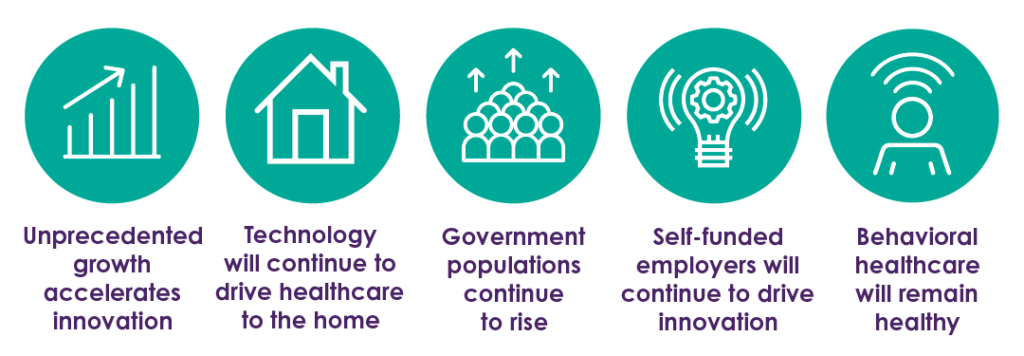
Rapid Growth in Telehealth
Last year, mandatory shutdowns due to COVID-19 created considerable demand for telehealth services. However, although the majority of mandatory shutdowns have since been lifted, the utilization of telehealth services remains higher than ever before. Before the pandemic, telehealth visits made up only 1% of total visits. While this number jumped to nearly 50% amidst shutdowns in April of 2020, telehealth visits now make up roughly 11% of total visits.
In the past, telehealth was hampered by skepticism and its impersonal regulatory environment. While it was gaining popularity due to its convenience, the progress was slow. One main issue prohibiting the wide adoption of telehealth services was the fees associated with it. However, the Centers for Medicare & Medicaid Services (CMS) most recent fee schedule made temporary changes to reimbursement permanent, making it more accessible.
Improved accessibility and reduced variability of care allow telehealth to offer better population health outcomes – creating buy-in from both providers and consumers. It’s not a matter of if telehealth is a viable method of healthcare, but how it fits into the current system. What is the appropriate mix of remote and in-person care?
While the new reimbursement structure solidified the concept for many, the popularization of telehealth was gaining momentum with both providers and patients before its implementation. In a recent study conducted by The Harris Poll, research showed that roughly 80% of patients who tried telehealth during the pandemic plan to continue utilizing it.
Aside from primary care – which is poised to be both a long-term and high-volume use for telehealth – other procedures are also vamping up their utilization. For example, mental health services have increased their accessibility through telehealth. This couldn’t come at a better time, given the rising issue of mental health in the U.S. amidst the pandemic. And, telepsychiatric services have become more popular for hospitals and clinics that have limited or no psychiatric staff when treating more severe mental health conditions.
In 2021, if an employee has a phone or computer, they can have access to on-demand healthcare. While more in-depth services might require you to be in-person, the realization that certain parts of the healthcare process can be managed remotely is growing expeditiously.
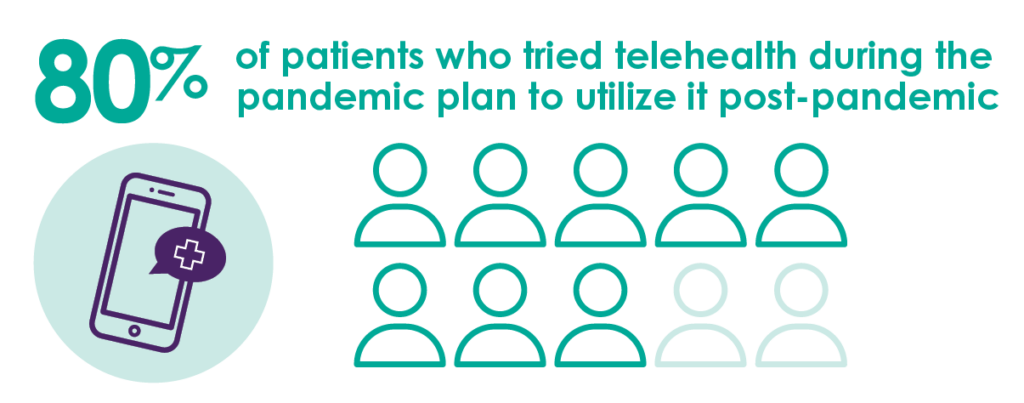
Technology Driven Healthcare
One place that is often overlooked as a viable clinical setting is an employee’s own home. However, in-home care can be incredibly valuable to many. Those who are able to receive care in-home will benefit from lower costs, and they might even prefer it over the traditional healthcare setting. In turn, many providers are showing an increased interest in an in-home approach to healthcare. This would provide a more holistic list of services including preventative care, ancillary care, and support solutions.
COVID-19 and the impact of the pandemic have permanently shifted the standards of primary healthcare. It has fast-tracked innovation and the embrace of telehealth. With the lack of resistance to this market and the digitization of the entire world, there are several technology-driven trends that you can expect to grow in 2021.
1. Remote Patient Monitoring
In 2019, roughly 88% of hospitals invested in remote patient monitoring technology. In 2021, remote patient monitoring is expected to continue to grow. As technologies that can monitor vitals become more popular (i.e. smartwatches), monitoring and treating patients suffering from chronic conditions such as diabetes and heart disease.
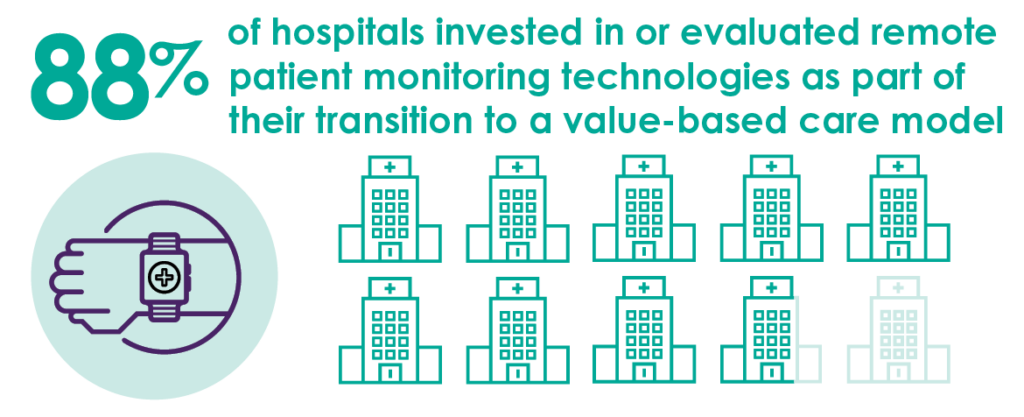
2. Telehealth
In March of 2020, the CMS began allowing expanded telehealth services through Medicare. As a result, many major insurance providers such as Blue Cross Blue Shield, Humana, and UnitedHealthcare expanded their coverages. At the end of 2020, the CMS completed the permanent expansion of telehealth. In 2021, the utilization of telehealth will continue to grow.
3. Telemedicine
In a recent study by the JAMA Network, research showed that the use of telemedicine in the U.S. increased by nearly 2000% between January and June of 2020. As care delivery to the home continues to grow, providers will also continue to virtually prescribe medications, while relying on remote patient monitoring to help make better care delivery decisions.
Rising Government Populations
In 2020 we saw rapid growth in the popularity of Medicare Advantage plans. This trend will continue to grow in 2021 as the popularity of managed care and value-based contracting increases. Total enrollment for Medicare Advantage plans in 2020 was nearly 25 million or 40% of all beneficiaries – a 6% increase from the number of enrollments in 2019.
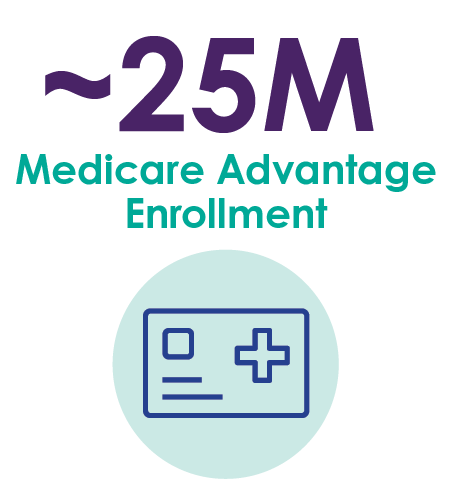
Now that we have a new president and administration in the White House, we can expect to see new priorities with government-sponsored healthcare programs. Possibly the greatest of these shifts in government programs is Medicaid. Between 2017 and 2019, Medicaid enrollment declined consecutively. However, since COVID-19 and its impact on the economy, enrollment is on the rise. In fact, 2020 saw an additional 5 million Americans added to Medicaid.
There is an apparent need for revisions to how we manage and pay the Medicaid population. Low reimbursement rates result in hesitant providers when treating Medicaid patients. This often means extended wait times for Medicaid patients seeking care. It’s no secret, Medicaid patients have long struggled to receive good health outcomes compared to those under commercial healthcare (Medicare), and in some instances, those who are uninsured.
More than 90 million Americans are now covered by Medicaid. That’s up from roughly 75 million before the outbreak of COVID-19. Additionally, the pandemic caused state budgets to tighten, forcing them to look to risk-based contracting arrangements to pay for it. As a result, budgets have become more predictable and the financial risk is moved to the managed care organizations that manage the Medicaid population.
These risk-bearing arrangements bring significant advantages in terms of financial savings due to the co-morbidities and the impact of Medicaid enrollees that have multiple conditions. Better management of these high-cost Medicaid patients could remove considerable amounts from the system. In addition, it increases the possible productivity for the working-age population who need less care.
Self-Funded Employers Will be Empowered to Control Healthcare Costs
While many attempts to curb healthcare costs have been made by providers, employers, and insurers alike, one thing is still apparent – The way that healthcare is both priced and paid for in the U.S. is unsustainable and costs continue to increase across the country. In 2020, both single and family premiums increased by 4% while wages increased by only 3.4% and inflation saw an increase of 2%.
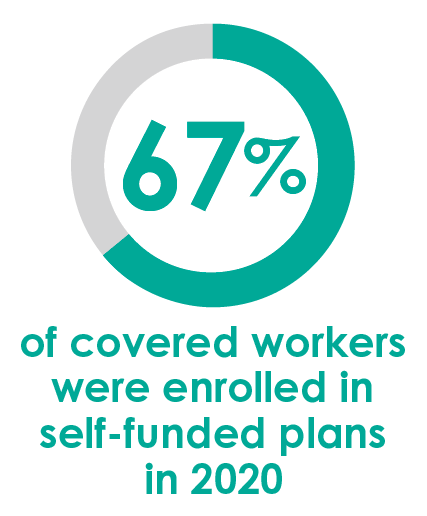
That said, one group has the power to improve the affordability of healthcare for both companies and their employees; self-funded employers. In 2020, 67% of workers with health coverage were enrolled in self-funded healthcare plans. That’s a 6% increase from 2019. Additionally, there were roughly 25 key mergers and acquisition transactions in 2020 in the healthcare space – a 92% increase over 2019. They included reference-based pricing companies, population health applications, care navigation, pharmacy benefits management, and more healthcare plan services. In 2021, we expect to see more growth in these and similar trends.
1. Physician Quality
Avoiding network friction creates limitations to health plans and their ability to guide individuals to physicians based on quality. In response, employers are now searching for ways to navigate members through the use of independent vendors. In 2021, the expectation is that these vendors will continue to utilize quality metrics such as second opinion solutions, physician quality scoring, and centers of excellence to improve their solutions.
2. Pharmacy Cost Containment
The rapid growth of pharmaceutical drug costs continues to be a significant component of healthcare spending, particularly in employer-sponsored health plans. In addition, mid-size and smaller employment groups are receiving poor member and utilization management services from large pharmacy benefits managers. In response, employers are doing more to define pharmacy benefits and participating in aggregation models to create both purchasing power and more focused clinical services.
3. Specialty Condition Management
There has been an increase in popularity for niche solutions, solutions that are built around small yet high-cost employee populations that account for a portion of total healthcare spending. With advanced tech foundations and data analytics, specialty condition management platforms create individualized solutions for employees while offering ROI tracking to employers so they can differentiate from more traditional solutions.
4. Benefit Utilization and Navigation
Better healthcare benefits aside, there is substantial demand for better access, education, and comprehension of the resources that employees have at their disposal. From the physician quality navigation listed above to ecommerce for products and services under the health plans, employers are finding ways to create engagement of the benefits while also managing costs effectively.
Behavioral Healthcare Demand Will Continue to Rise
In 2020, as the stigmas around mental health decreased, the behavioral healthcare market gained momentum. During the pandemic, the demand for behavioral healthcare services saw unprecedented highs as substance abuse, alcoholism, and suicide rates increased across the board. In 2021, we expect the demand for these services will remain strong.
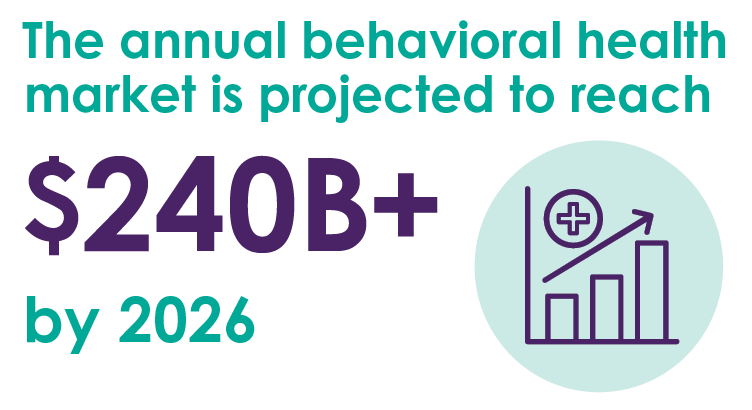
According to a study by Acumen in 2019, research showed that the annual behavioral health market is projected to surpass $240 billion by 2026. Considering that roughly 80% of Americans reported having experienced significant stress due to COVID-19, we expect to see continued growth in individuals seeking behavioral care. In addition, there is a shortage of behavioral health providers in the U.S., and the shortage is expected to grow significantly over the next decade. With this in mind, we expect to see certain trends continue in 2021.
1. Improved Access to Healthcare
With the growing focus on behavioral health, we expect sustained efforts from both the government and private sectors to improve awareness and access to care. With the increased utilization of telehealth and telemedicine services, access to behavioral healthcare is increasing, allowing us to meet the growing mental health crisis in America.
2. Demand for New Solutions
There has been a considerable amount of capital invested into digital health platforms for providers, employers payers, and direct-to-consumer. Expansion of specific segments of behavioral health services is creating a heightened demand for IT solutions with behavioral health technologies. In 2021, we are expecting even more interest in this space from strategic and financial buyers alike.
3. Private Equity Investment
Since 2018, roughly 60 new behavioral health private equity platforms have formed. In 2021, the expectation is that private equity investors will continue to play an increasingly large role in behavioral healthcare.
